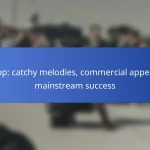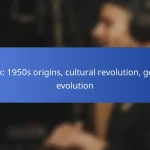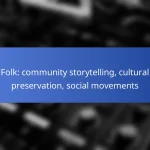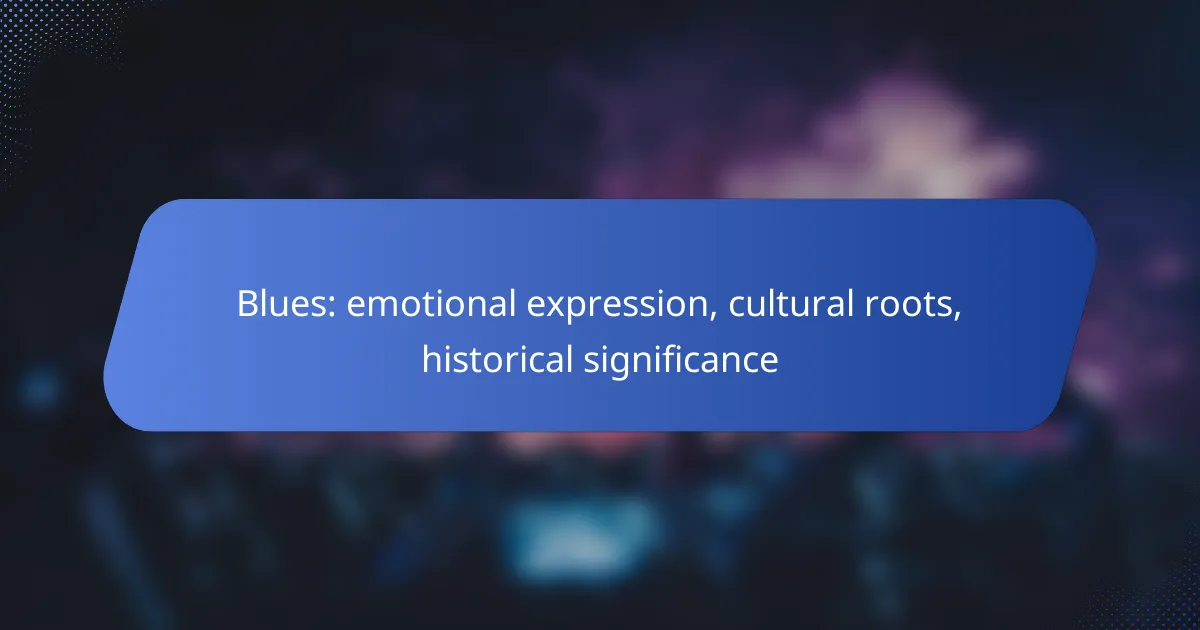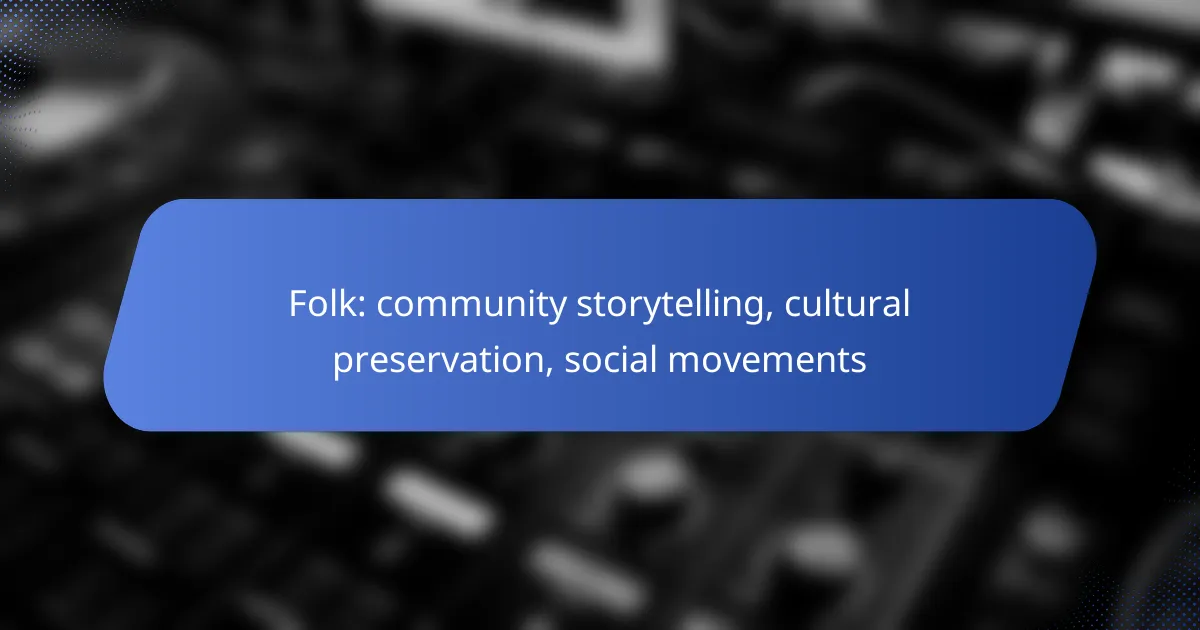Pop culture is a dynamic reflection of global trends, characterized by rapid technological advancements and increased cultural exchange. As diverse music genres and artistic expressions gain commercial traction, the interconnectedness of the world fosters innovative collaborations and a richer cultural landscape. This evolution not only reshapes consumer preferences but also enhances the global appeal of pop music, allowing artists to reach wider audiences than ever before.
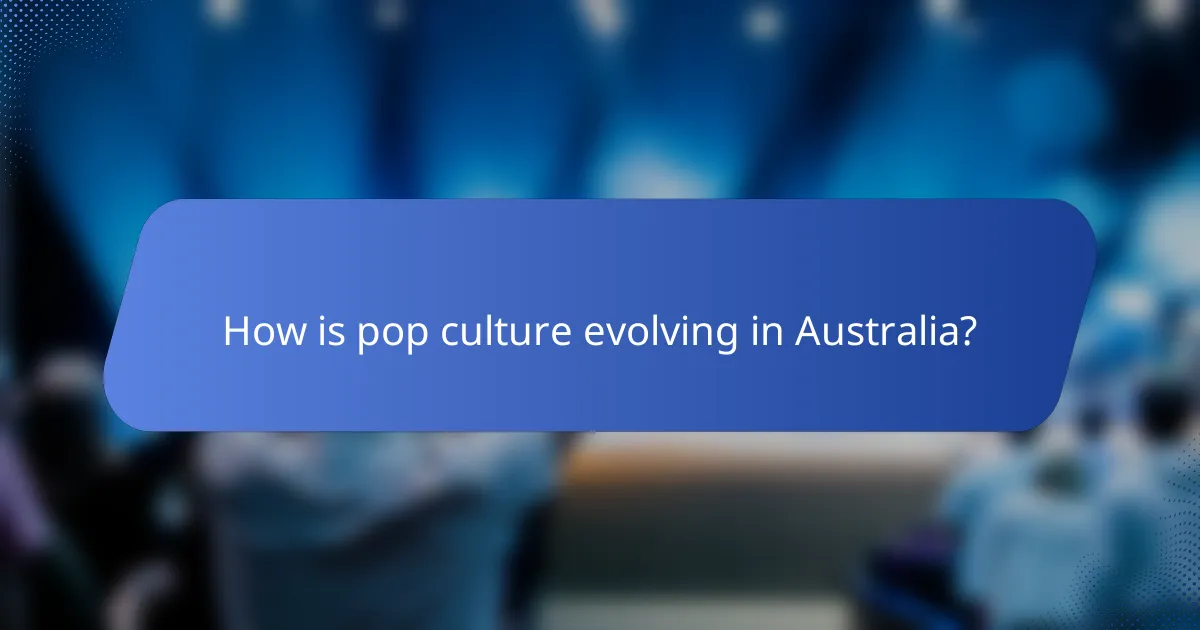
How is pop culture evolving in Australia?
Pop culture in Australia is rapidly evolving, driven by technological advancements and shifting consumer preferences. The rise of digital platforms has transformed how Australians engage with music, film, and fashion, fostering a more diverse and inclusive cultural landscape.
Influence of social media platforms
Social media platforms like Instagram, TikTok, and YouTube play a crucial role in shaping pop culture in Australia. These platforms allow artists to share their work directly with audiences, bypassing traditional gatekeepers such as record labels and media outlets.
For instance, viral trends often emerge from user-generated content, leading to increased visibility for local artists. This democratization of content creation encourages a wide range of voices and styles to gain recognition, reflecting the diverse Australian identity.
Impact of streaming services
Streaming services such as Spotify and Apple Music have transformed how Australians consume music, allowing for instant access to a vast library of songs. This shift has led to a decline in physical album sales, with many artists focusing on digital releases and singles to reach their audience.
Moreover, these platforms often curate playlists that highlight local talent, promoting Australian artists to a global audience. This accessibility fosters a competitive environment where emerging musicians can thrive alongside established names.
Emergence of local artists
The Australian music scene is witnessing a surge in local artists gaining international recognition. Genres like pop, hip-hop, and indie rock are flourishing, with artists blending traditional Australian influences with global trends.
Local festivals and events, such as Splendour in the Grass and Laneway Festival, provide platforms for these artists to showcase their talent. As a result, the Australian pop culture landscape is becoming increasingly vibrant and varied, reflecting the unique stories and experiences of its creators.

What are the key global trends in pop culture?
Key global trends in pop culture include the rise of diverse music genres, increased cultural exchange, and the commercialization of artistic expressions. These trends reflect how interconnected the world has become, with influences crossing borders more rapidly than ever.
Rise of K-pop in Western markets
K-pop has significantly penetrated Western markets, transforming the global music landscape. Groups like BTS and BLACKPINK have achieved massive success, topping charts and selling out arenas, demonstrating the genre’s appeal beyond Asia.
This rise is fueled by social media platforms, where fans share content and engage with artists directly. The use of English lyrics in some songs has also helped K-pop reach a broader audience, making it more accessible to non-Korean speakers.
Globalization of music genres
The globalization of music genres has led to a fusion of styles, creating new sounds that resonate with diverse audiences. Genres like reggaeton, Afrobeats, and Latin pop are now mainstream, showcasing the blending of cultural influences.
Streaming services play a crucial role in this trend, allowing listeners to discover international music easily. As a result, artists are increasingly experimenting with cross-genre collaborations, appealing to a wider range of fans.
Cross-cultural collaborations
Cross-cultural collaborations are becoming more common, as artists from different backgrounds come together to create unique music. These partnerships often blend distinct musical styles and cultural elements, resulting in innovative and fresh sounds.
Examples include collaborations between Western artists and those from Africa or Asia, which not only enhance musical diversity but also promote cultural understanding. Such projects can lead to increased visibility for lesser-known artists and genres, further enriching the global music scene.

How does cultural exchange shape pop music?
Cultural exchange significantly influences pop music by blending diverse musical traditions and styles, leading to innovative sounds and trends. This dynamic interaction fosters creativity and allows artists to reach broader audiences, enhancing the global appeal of pop music.
Fusion of traditional and modern styles
The fusion of traditional and modern styles creates unique musical landscapes that resonate with a wide range of listeners. For instance, the incorporation of African rhythms in Western pop or the use of traditional Asian instruments in contemporary tracks exemplifies this blend. Such combinations not only enrich the music but also preserve cultural heritage while appealing to modern sensibilities.
Artists often experiment with various genres, leading to new sub-genres that reflect this cultural melding. This approach can attract diverse fan bases and encourage cross-cultural appreciation.
Influence of international festivals
International festivals play a crucial role in promoting cultural exchange within pop music. Events like Coachella in the United States or Glastonbury in the UK showcase artists from various countries, allowing them to share their music with global audiences. These platforms foster collaboration and inspire artists to incorporate different cultural elements into their work.
Moreover, festivals often feature workshops and discussions that highlight the importance of cultural diversity in music, encouraging artists to explore and integrate influences from around the world.
Collaborations between artists from different countries
Collaborations between artists from different countries are a powerful way to blend cultural influences in pop music. These partnerships can lead to innovative tracks that combine distinct musical styles and languages, appealing to a wider audience. For example, collaborations between Latin and American pop artists have produced chart-topping hits that reflect a rich cultural exchange.
Such collaborations often result in unique marketing opportunities, as they can tap into multiple fan bases and increase visibility across different regions. Artists should consider these partnerships as a way to expand their reach and enhance their creative output.
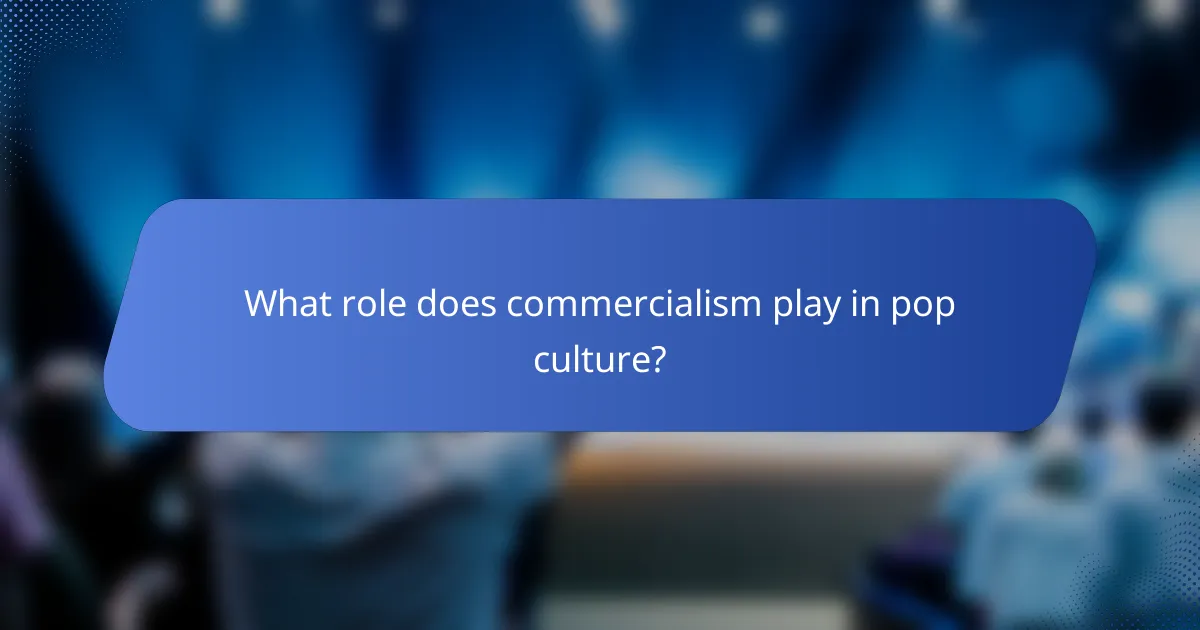
What role does commercialism play in pop culture?
Commercialism significantly shapes pop culture by driving trends, influencing artist collaborations, and dictating consumer behavior. It creates a symbiotic relationship where brands leverage popular music to reach audiences, while artists gain financial support and visibility.
Brand partnerships with artists
Brand partnerships with artists are a key aspect of commercialism in pop culture. Companies often collaborate with musicians to create co-branded campaigns that resonate with fans and enhance brand visibility. For example, a popular beverage brand might sponsor a music festival featuring top artists, creating a direct link between the brand and the music experience.
These collaborations can take various forms, including exclusive merchandise, social media promotions, and even music videos featuring brand products. Such partnerships not only boost sales but also help artists expand their reach and connect with new audiences.
Merchandising trends in pop music
Merchandising is a crucial revenue stream in pop music, with artists selling everything from clothing to collectibles. Trends show that limited edition items and collaborations with fashion designers are particularly popular, appealing to fans’ desire for exclusivity. For instance, a pop star might release a unique clothing line that reflects their personal style, driving both sales and brand loyalty.
Additionally, online platforms have made it easier for artists to sell merchandise directly to fans, often during virtual concerts or through social media. This direct-to-consumer approach allows artists to maximize profits while engaging with their audience in a meaningful way.
Impact of advertising on music consumption
Advertising plays a significant role in shaping music consumption patterns. Streaming services often use targeted ads to promote new releases or playlists, influencing listener choices and driving traffic to specific songs or albums. This targeted approach can increase an artist’s visibility and lead to higher streaming numbers.
Moreover, music videos and commercials frequently intertwine, with songs featured in ads becoming hits due to increased exposure. For example, a catchy tune in a popular commercial can lead to a surge in downloads and streams, demonstrating the powerful connection between advertising and music consumption.

How do Australian artists navigate global markets?
Australian artists navigate global markets by leveraging unique strategies tailored to international audiences while maintaining their cultural identity. They focus on effective touring, digital presence, and fan engagement to expand their reach and impact.
Strategies for international tours
To successfully conduct international tours, Australian artists often start by identifying key markets that align with their music style and audience demographics. They may collaborate with local promoters to understand venue preferences and audience behaviors, which can significantly enhance ticket sales.
Additionally, artists should consider the timing of their tours, avoiding clashes with major local events or holidays that could affect attendance. Building a strong promotional campaign that includes social media outreach and partnerships with local influencers can also help maximize visibility.
Utilization of digital platforms
Digital platforms play a crucial role in how Australian artists reach global audiences. Streaming services like Spotify and Apple Music allow artists to distribute their music widely, while social media channels enable direct engagement with fans across different countries.
Artists should optimize their profiles on these platforms, using analytics to understand listener demographics and preferences. Regularly releasing content, such as music videos or behind-the-scenes footage, can keep fans engaged and attract new listeners.
Building a global fanbase
Building a global fanbase requires consistent interaction and engagement strategies. Australian artists can utilize email newsletters, social media updates, and exclusive content to keep fans informed and connected. Hosting virtual events or live streams can also help maintain interest and foster a sense of community.
Moreover, collaborating with international artists can introduce Australian musicians to new audiences, expanding their reach. It is essential to remain authentic and true to their roots while appealing to diverse cultural tastes, which can create a loyal and engaged global following.

What are the challenges faced by pop artists in Australia?
Pop artists in Australia encounter several challenges, including fierce competition from international acts and limited funding for local talent. These factors can hinder their ability to gain recognition and achieve commercial success in a globalized music industry.
Competition from international acts
Australian pop artists face significant competition from international acts, particularly those from the United States and the United Kingdom. With the rise of digital platforms, global music consumption has increased, making it easier for international artists to reach Australian audiences.
This competition can overshadow local talent, making it essential for Australian artists to differentiate themselves through unique sounds, innovative marketing strategies, and engaging performances. Collaborations with other artists or genres can also help them stand out in a crowded market.
Funding and support for local talent
Access to funding and support is a critical challenge for pop artists in Australia. Government grants and music industry initiatives often have limited budgets, making it difficult for emerging artists to secure financial backing for their projects.
To navigate this landscape, artists should explore various funding sources, including crowdfunding, sponsorships, and partnerships with local businesses. Additionally, participating in music competitions or festivals can provide exposure and potential financial support, helping them to build a sustainable career.
